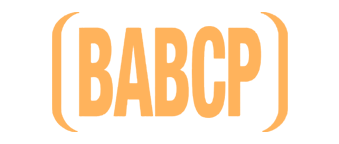Programme Information
This is an online programme which is completed via our website. After purchasing the programme, your login details will be emailed to enable access.
Anxiety can significantly impact your daily life, from minor disruptions to overwhelming feelings. If you’re looking for practical strategies to manage anxiety, our Relief from Anxiety online course is designed just for you. This comprehensive program helps you better understand the nature of anxiety, recognise its triggers, and develop effective coping mechanisms. Whether you are looking to prevent relapse after therapy or seeking to improve your overall mental well-being, this course provides valuable insights and tools. Delivered entirely online through our easy-to-navigate platform, you can work through the materials at your own pace, revisiting content whenever necessary. Upon purchasing, you will receive login details via email, giving you immediate access to the course materials.
You can work through this in your own time, and the contents are as follows:
- Understanding Anxiety
- What is Anxiety?
- Helpful Anxiety
- Unhelpful Anxiety
- What causes Anxiety?
- Managing Anxiety
- Calm Breathing
- Relaxing your muscles
- Journalling
- Going for a walk/exercise
- Activity engagement
- Understanding the thought-feeling link
- Talking to someone
- Quiz
Let’s now take a detailed look into everything you will learn on this course:
Relief from Anxiety: Online Course Overview
Our Relief from Anxiety program focuses on understanding the complexities of anxiety and teaches you actionable strategies to help manage it in your everyday life. You’ll explore both the helpful and unhelpful aspects of anxiety, learning how to control the latter to enhance your mental health. From understanding the causes of anxiety to mastering techniques such as calm breathing and journaling, this course equips you with a toolkit of anxiety management methods. Each module is filled with valuable information that will empower you to face anxiety head-on. By engaging with the exercises and tasks throughout, you’ll be actively working toward reducing your anxiety and gaining control over your life.
Module 1: Understanding Anxiety
The first module delves into the foundations of anxiety, helping you comprehend what anxiety is and how it manifests. Anxiety is a universal experience, affecting everyone at some point in life. In this section, you will explore the differences between helpful and unhelpful anxiety. While anxiety can sometimes protect us from danger by triggering a ‘fight or flight’ response, it can also become overwhelming and detrimental when it interferes with daily functioning.
You will learn about the biological and psychological causes of anxiety, which can vary from person to person. Additionally, this module covers common physical symptoms of anxiety, such as muscle tension, nausea, sweating, and an increased heart rate, helping you recognise the signs in yourself. Armed with this knowledge, you’ll be better equipped to face anxiety without feeling overwhelmed by its effects.
What is Anxiety?
Anxiety is a natural response to stress or perceived threats. It’s an emotional state characterised by feelings of tension, worry, or unease about future events. While some level of anxiety is a normal part of life, it can become overwhelming when persistent. In this lesson, you’ll explore how anxiety manifests both mentally and physically. You’ll learn to recognise the symptoms, such as increased heart rate, muscle tension, and restlessness, and understand that these sensations are part of your body’s response to a perceived threat. Identifying anxiety is the first step toward managing it effectively.
Helpful Anxiety
Not all anxiety is harmful. In this lesson, you’ll explore how anxiety can serve a protective purpose, preparing your body to handle potential danger by initiating the fight-or-flight response. You’ll learn how anxiety helps boost alertness, focus, and motivation, such as when preparing for a job interview or giving an important presentation. This lesson will guide you to differentiate between anxiety that serves a beneficial purpose and anxiety that becomes debilitating. By understanding helpful anxiety, you can use it to your advantage in situations where heightened focus or energy is needed, turning it into a tool for success.
Unhelpful Anxiety
While anxiety can sometimes be helpful, it becomes problematic when it interferes with daily functioning. In this lesson, you’ll examine the signs of unhelpful anxiety, including persistent worry, feelings of dread, and physical symptoms like nausea and shaking. You’ll also explore how anxiety disorders—such as generalised anxiety disorder (GAD), social anxiety, and panic disorders—develop when anxiety becomes overwhelming. By identifying the impact unhelpful anxiety has on your mental and physical health, this lesson prepares you to take the next step in managing it, making your life less affected by overwhelming or irrational fears.
What Causes Anxiety?
Anxiety has multiple causes, ranging from genetic predispositions to environmental stressors. In this lesson, you’ll explore both biological and psychological factors that contribute to anxiety. You’ll learn how genetics can make some individuals more vulnerable to anxiety, while life experiences, such as trauma or long-term stress, can act as triggers. Additionally, you’ll examine how early learning and unhelpful thinking patterns can increase anxiety levels. Understanding these causes is key to managing anxiety, as it helps you identify the root of your feelings and work toward breaking the cycle of anxious thoughts and behaviours.
Module 2: Managing Anxiety
In the second module, you will be introduced to a variety of practical methods to manage anxiety. From breathing exercises designed to calm your body to engaging in activities that help take your mind off anxious thoughts, this section offers several tools that you can incorporate into your daily life.
You will learn techniques such as calm breathing, where deep and focused breathing helps regulate your nervous system, and muscle relaxation, which involves tensing and then releasing muscle groups to relieve physical tension. Journaling is another effective method, allowing you to express your thoughts and gain perspective on what’s causing your anxiety. You will also be encouraged to engage in physical activity, like walking, which can be a powerful way to reduce anxiety.
This module emphasises understanding the link between your thoughts and feelings, teaching you how to reframe negative thoughts that may be driving your anxiety. Through Cognitive Behavioural Therapy (CBT) strategies, you’ll gain insights into how thoughts influence emotions and learn to shift negative patterns.
Calm Breathing
Calm breathing is a powerful technique for managing anxiety. In this lesson, you’ll learn how slow, deep breaths can help regulate your body’s stress response. The exercise focuses on breathing in through your nose, pausing, and then exhaling slowly through your mouth. Practicing this regularly can slow your heart rate and help you feel more grounded. You’ll also explore breathing techniques like the 4-3-4 method, which involves deep breathing for 4 counts, holding for 3, and exhaling for 4. This simple but effective practice helps calm anxious thoughts and provides immediate relief from physical anxiety symptoms.
Relaxing Your Muscles
Tension often accompanies anxiety, causing physical discomfort and even pain. In this lesson, you’ll discover techniques for relaxing your muscles, using a method called progressive muscle relaxation. This involves tensing and then releasing muscle groups one by one, from your head to your toes. By learning to recognise and release tension, you’ll reduce physical symptoms of anxiety and create a sense of calm in your body. This exercise not only helps with immediate relaxation but also trains your body to respond differently to stress in the future, making it a valuable tool for managing anxiety long-term.
Journalling
Journaling is a therapeutic tool that allows you to express and process your thoughts and feelings. In this lesson, you’ll learn how writing down your anxious thoughts can provide clarity, helping you better understand and manage your emotions. The act of journaling helps reduce the intensity of negative feelings by transferring them onto paper, where they can seem less overwhelming. You’ll be encouraged to write about specific anxiety triggers and reflect on possible solutions. Over time, journaling can help identify patterns in your thoughts and behaviours, offering deeper insights into your anxiety and how to cope with it.
Going for a Walk/Exercise
Physical activity is a proven method for reducing anxiety, and this lesson focuses on the simple yet effective act of walking. Taking a walk diverts your attention from anxious thoughts, allowing you to focus on your body and surroundings. You’ll learn how regular exercise, even something as basic as a daily walk, can release tension and improve your overall mental health. The lesson also touches on how exercise stimulates the production of endorphins—natural chemicals that promote a sense of well-being—making it an excellent way to manage anxiety and improve your mood.
Activity Engagement
Engaging in enjoyable and meaningful activities is a powerful way to manage anxiety. This lesson teaches you how participating in hobbies or interests you love can help shift your focus away from worries and stress. Whether it’s practicing yoga, playing music, or engaging in creative projects, finding activities that bring you joy can improve your mood and reduce anxious thoughts. You’ll also explore the importance of balance, ensuring you make time for activities that promote relaxation and mental health. This lesson encourages you to actively pursue the things that make you happy as part of your anxiety management plan.
Understanding the Thought-Feeling Link
The way we think directly influences how we feel, and this lesson explains the crucial link between thoughts and emotions. Using Cognitive Behavioural Therapy (CBT) techniques, you’ll learn how negative thinking patterns can fuel anxiety and how changing those thoughts can positively impact your feelings. You’ll explore common cognitive distortions—such as catastrophic thinking and overgeneralisation—and how they contribute to anxiety. By learning to identify and challenge these negative thoughts, you’ll gain greater control over your emotions, allowing you to break the cycle of anxiety and develop healthier, more balanced ways of thinking.
Talking to Someone
Opening up to others is an essential part of managing anxiety. This lesson encourages you to communicate your feelings with trusted friends, family members, or professionals. Sharing your thoughts can help reduce the burden of anxiety and provide new perspectives on how to cope. Whether you’re discussing your worries with a loved one or seeking advice from a therapist, talking through your feelings can often lead to solutions that weren’t immediately apparent. The lesson also emphasises the importance of seeking professional help when anxiety becomes too overwhelming to manage on your own.
Conclusion
The Relief from Anxiety course provides a comprehensive framework for understanding and managing anxiety. By the end of the program, you will be equipped with practical strategies that you can use daily to reduce anxiety and maintain mental well-being. The course is designed for individuals who want to take control of their anxiety, whether you’re looking to prevent relapse after therapy or seeking to improve your overall mental health. With tools like deep breathing, journaling, and activity engagement, you will be better prepared to face anxiety, head on, and live a more balanced life.
This course is self-paced, allowing you the flexibility to work through the content as it suits you. With lifetime access, you can revisit the materials whenever needed. Start your journey to a calmer, more empowered self today by signing up for Relief from Anxiety.





Anonymous –
I found this online course really helpful for understanding my anxiety and was able to complete it in my own time.